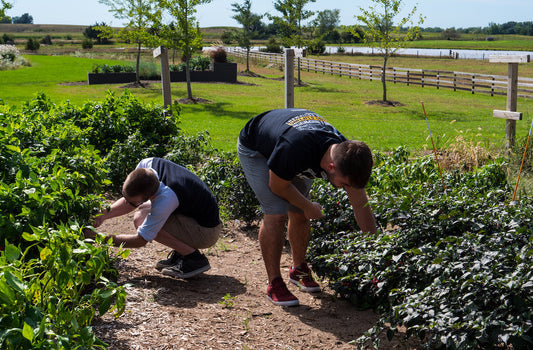
Wind significantly influences the growth of pepper plants, whether you're cultivating them indoors or outdoors. To ensure your garden thrives, it's crucial to understand both the positive and negative impact wind can have on seedlings. Continue reading to learn more!
Positive Effects of Wind on Pepper Plants
Wind has numerous beneficial effects on the pepper plant's health and productivity including pollination enhancement, stem strength and structure growth, ventilation and air circulation, and transpiration and cooling. Let's dive into all the amazing benefits!
1. Pollination Enhancement
Pepper Plants rely on pollination for fruit development and production. Although some varieties may be capable of self-pollination to some extent, many varieties significantly benefit from cross-pollination. This is where pollen from one flower is transferred to the stigma of another flower on a different plant. Cross-pollination in pepper plants is typically facilitated by insects like bees, butterflies, and other pollinator agents such as wind! In an outdoor growing environment, wind plays a large role in pollination. As the wind blows, it carries pollen from one flower to another, facilitating fertilization.
Without adequate pollination, your plants may produce fewer fruits or have misshapen or poorly developed peppers. If you are growing your pepper plants indoors, we recommend gently shaking your plant's flowers to help aid in pollen transfer.

2. Plant Stem Strength and Structure
Wind also helps pepper plants develop strong stems. When plants are gently swayed by the wind, it prompts them to develop thicker stems and sturdier structures. Plants that experience wind need to adapt to the stress. This leads them to have enhanced resilience against bending and breaking. Each time a plant is pushed by the wind, it releases a hormone called auxin that stimulates the growth of supporting cells.
If you are growing your plants indoors, we recommend adding some airflow to the environment. Miniature oscillating fans are a great option for this. As your plants grow in a space with continuous airflow, they will become accustomed to the movement. It is also important you gradually transition your plants outdoors. Check out our Blog on how to harden off and transplant pepper plants in six simple steps!

3. Ventilation and Air Circulation
Additionally, wind promotes air circulation around the plants. Air circulation is vital for overall plant health. Proper ventilation helps prevent the buildup of stagnant air and moisture around the leaves. If your plants don't receive fresh air, they are at risk of fungal diseases. Air circulation ensures an adequate supply of carbon dioxide for photosynthesis and helps regulate temperature.
4. Transpiration and Cooling
Transpiration is the process of water movement through a plant and its evaporation from its leaves, stems, and flowers. Wind increases the rate of transpiration. It helps control the plant and regulates its temperature, especially during hot weather. Transpiration also aids in nutrient uptake and the transportation of water and minerals from the roots to the other parts of the plant.
Negative Effects of Wind on Pepper Plants
1. Moisture Loss and Drying Out
Although wind can promote transpiration and cooling, unfortunately, it can also lead to excessive moisture loss from the leaves if it is too strong and persistent. During periods of low humidity or drought, the wind can cause the plant to dry out faster. Prolonged moisture stress can weaken the plant, impact its growth, and reduce fruit yield.
2. Physical Damage
High winds are not ideal for pepper plants. They pose a risk of physical damage to the plants, especially young or fragile seedlings. Strong gusts of wind can break stems, snap branches, dislodge flowers or immature fruit, and even uproot entire plants.
3. Soil Erosion and Nutrient Loss
Intense winds can accelerate soil erosion by displacing topsoil and exposing the roots of the plants. This affects both the stability of the plant and its ability to absorb nutrients. Eroded soil can also clog garden irrigation systems and waterways.
4. Pest and Disease Spread
Lastly, wind can spread pests and diseases among pepper plants. Insects, fungal spores, and other pathogens can be carried by the wind over long distances. To avoid any pest damage, we recommend you check out our blog on how to get rid of pests on pepper plants.
While wind plays a massive role in the health of our pepper plants, it can also lead to some major challenges. Balancing these factors and implementing protective measures can help you maximize the positive effects of wind while minimizing the negative effects for an overall healthy garden this year!
Additional Growing Tips from Pepper Joe's
We know gardening can be tricky at times. At Pepper Joe's, we work to provide you with as much helpful content that helps you grow the most optimal hot peppers. Browse through our Grow With Joe video series for more information, and be sure to check out our Gardening Tips & Guides that help break down many different pepper growing topics.
Our team of growing experts are here to help you answer any questions you have on growing hot peppers. Feel free to reach out via email or call us at (888) 660-2276 today.







